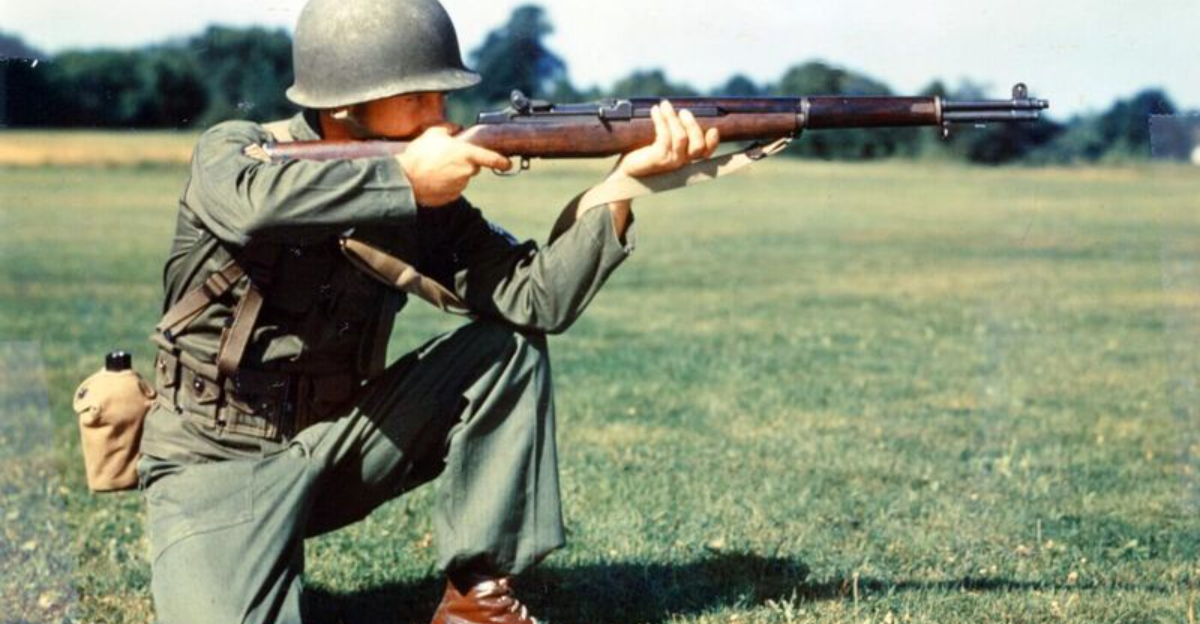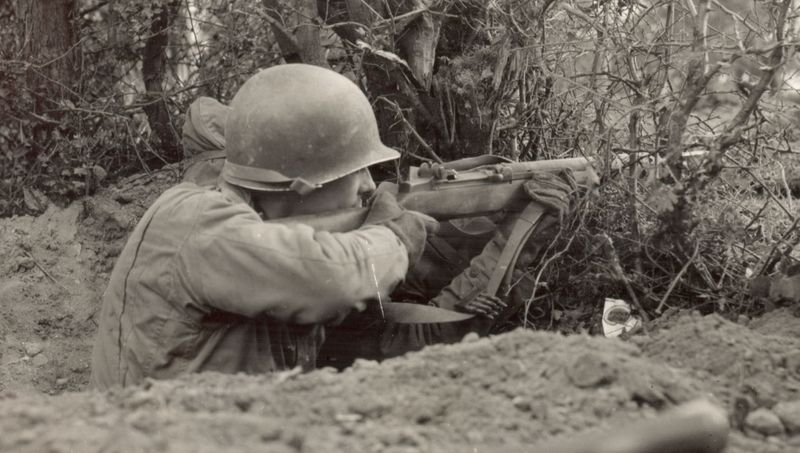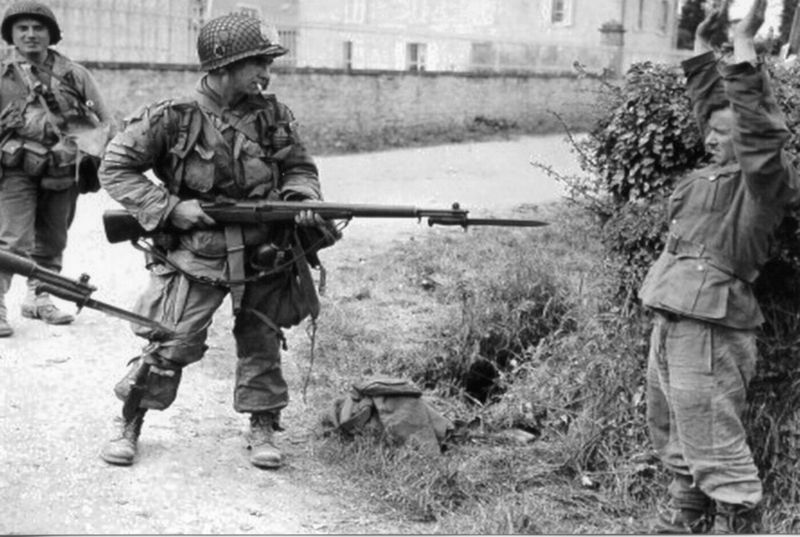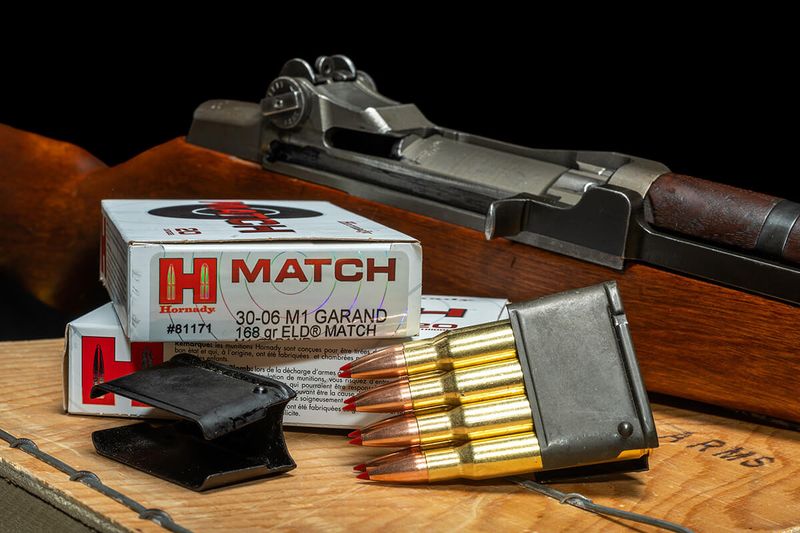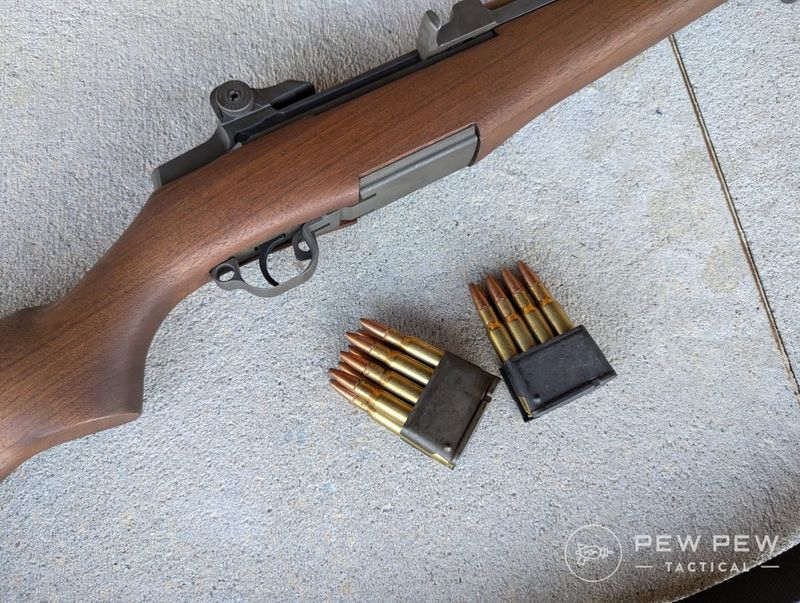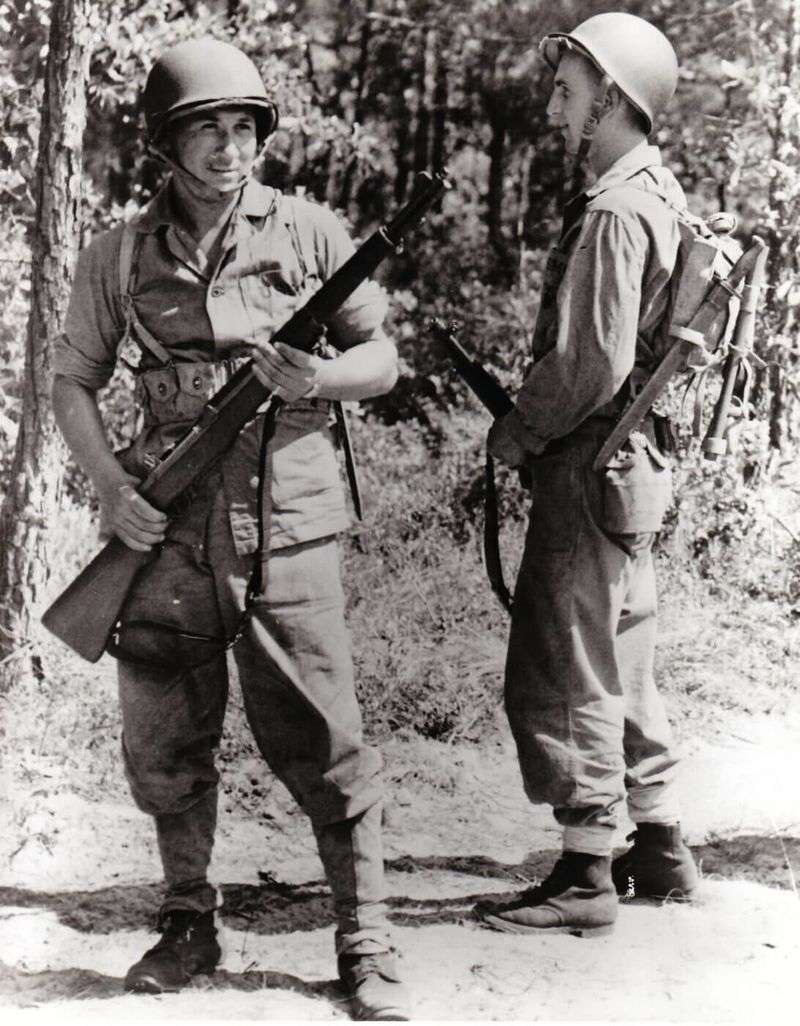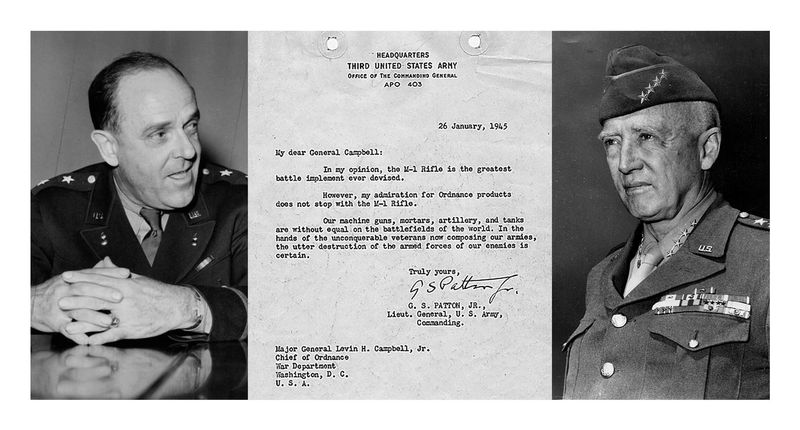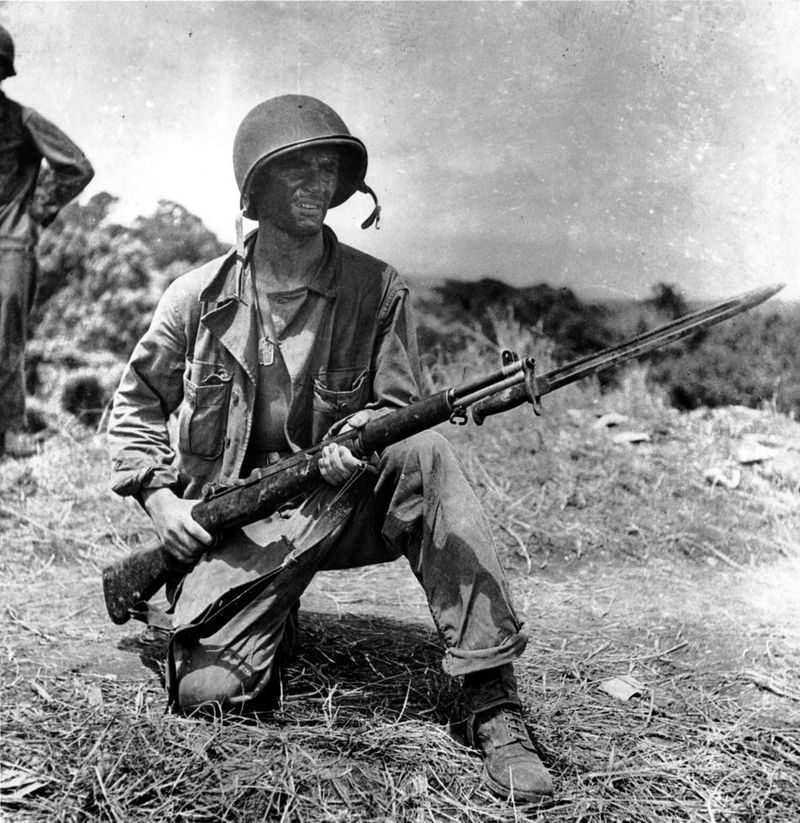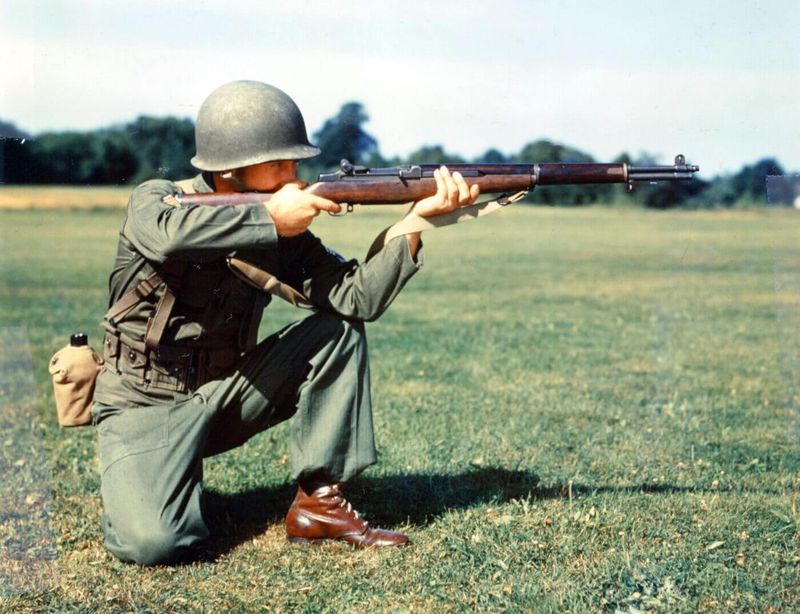The M1 Garand changed the face of modern warfare as America’s primary battle rifle during World War II. This revolutionary semi-automatic weapon gave U.S. soldiers a significant advantage over enemies equipped with bolt-action rifles. From its innovative design to its distinctive ‘ping’ sound when ejecting empty clips, the M1 Garand earned its place in military history as one of the most influential firearms ever created.
1. Inventor: Designed by John C. Garand, a Canadian-born American engineer, in the late 1920s and early 1930s.
Born in Quebec but raised in America, John Cantius Garand spent over 15 years perfecting his semi-automatic rifle design while working at Springfield Armory. His dedication was remarkable – he turned down lucrative private sector offers to continue his government work.
Garand never patented his design, believing his creation belonged to the American people. This selfless act meant he earned no royalties despite millions of rifles bearing his name being produced.
His engineering brilliance solved complex mechanical problems that had stumped other designers for years, creating a reliable weapon that functioned in the harshest battlefield conditions.
2. Official Adoption: Became the standard U.S. military rifle in 1936, replacing the bolt-action M1903 Springfield.
The U.S. Army’s adoption of the M1 Garand marked a revolutionary shift in infantry tactics. After rigorous testing against other designs, the Garand emerged victorious due to its reliability, accuracy, and rate of fire that far outpaced the older Springfield.
Military leadership initially hesitated to replace the trusted bolt-action rifles that had served since World War I. Some officers worried soldiers would waste ammunition with a semi-automatic weapon.
The transition period saw both rifles in service simultaneously as production ramped up, with priority units receiving the new Garands first while training facilities continued using the older Springfields.
3. First Semi-Auto Standard Issue: The M1 Garand was the first semi-automatic rifle to be widely issued to infantry troops.
Revolutionary for its time, the Garand gave American soldiers firepower superiority that fundamentally changed infantry combat. While other nations experimented with semi-automatic designs, none successfully deployed them as standard infantry weapons during WWII.
The eight-round capacity allowed soldiers to maintain continuous fire without manually operating a bolt between shots. This innovation meant American troops could deliver nearly triple the firepower of their opponents equipped with bolt-action rifles.
Training programs had to be completely redesigned to teach proper handling, maintenance, and tactical employment of this new class of weapon. Many veterans initially distrusted the complex mechanism until experiencing its advantages firsthand.
4. Caliber: Fired the powerful .30-06 Springfield cartridge, giving it excellent range and stopping power.
The .30-06 cartridge (pronounced “thirty-aught-six”) was already battle-proven from World War I, offering the perfect balance of power, range, and controllability. This round could effectively reach targets beyond 500 yards while delivering enough energy to neutralize an enemy soldier with a single well-placed shot.
Using this established caliber simplified logistics since the ammunition was already in widespread production. American factories were tooled up to produce millions of these cartridges monthly.
The powerful recoil presented challenges for Garand’s design team, who had to create a gas system strong enough to cycle the action reliably without breaking parts or causing excessive wear to the rifle’s mechanism.
5. En Bloc Clip System: Used an 8-round en bloc clip that ejected with a distinctive “ping” sound when empty.
The en bloc clip system was an ingenious solution for rapid reloading under combat conditions. Soldiers could insert a pre-loaded 8-round clip with a quick downward push, allowing them to reload much faster than their adversaries with bolt-action rifles.
When the last round was fired, the empty clip would automatically eject with the famous “ping” sound that has become synonymous with the Garand. Some veterans recall this sound alerting enemies they were reloading, while others insist battlefield noise drowned it out.
Unlike modern detachable magazines, these clips were designed to be disposable. Millions were manufactured during the war, with soldiers typically carrying several pre-loaded clips in specialized pouches on their gear.
6. WWII Workhorse: Served as the primary U.S. rifle in WWII, with over 4 million produced by 1945.
Manufacturing the Garand became one of America’s greatest industrial achievements during WWII. Production lines at Springfield Armory and Winchester worked around the clock, eventually reaching daily outputs that would have seemed impossible before the war.
The rifle saw action in every theater of the war, from the humid jungles of the Pacific to the frozen forests of the Ardennes. Its reliability in these diverse environments cemented its reputation among frontline troops.
Female factory workers played a crucial role in Garand production, with thousands of women joining the manufacturing effort. Their precision work ensured consistently high-quality rifles reached American soldiers fighting overseas, making them an essential part of the weapon’s legacy.
7. General Patton’s Praise: General George S. Patton called it “the greatest battle implement ever devised.”
General Patton’s famous endorsement came in a January 1945 letter to the Springfield Armory. As one of America’s most aggressive and successful battlefield commanders, his opinion carried tremendous weight among military leadership and frontline troops alike.
The colorful general was known for his blunt assessments of equipment, making his unrestrained praise for the Garand particularly meaningful. He had witnessed firsthand how the rifle’s firepower advantage translated to tactical superiority against German forces.
Patton’s quote became a rallying cry for American arms manufacturers and was frequently used in promotional materials encouraging war bond purchases and factory production. Today, these words remain inseparably linked with the M1’s historical legacy.
8. Korean War Service: Continued as the main U.S. battle rifle during the Korean War (1950-1953).
Korean War conditions tested the Garand to its limits, with extreme temperature swings from blistering summers to sub-zero winters. Veterans recall using their body heat to keep the rifle’s oil from freezing during the brutal Chosin Reservoir campaign.
Chinese human wave attacks highlighted the Garand’s advantage – its semi-automatic fire allowing defenders to repel masses of charging enemy soldiers. Many American positions held out against overwhelming odds largely thanks to their superior firepower.
By this conflict, maintenance procedures and spare parts logistics had been refined to near perfection. Field armorers could quickly repair damaged rifles, ensuring units maintained combat effectiveness even during extended operations far from supply bases.
9. Replacement: Phased out in the late 1950s by the M14 rifle, which was based on Garand’s design.
The M14 retained the Garand’s reliable gas system while adding features soldiers had requested: a 20-round detachable magazine and selective-fire capability. Essentially an evolved Garand, it demonstrated the fundamental soundness of John Garand’s original design principles.
Military planners initially expected the M14 to serve as America’s standard battle rifle for decades. However, the rapidly changing nature of warfare during the Vietnam era would soon make even this improved design seem outdated compared to lighter assault rifles.
Many Garands didn’t go to the scrapyard when replaced. Thousands were provided to allied nations through military assistance programs, while others entered civilian markets through the Civilian Marksmanship Program, allowing the iconic rifle to continue its service in new hands.
10. Global Influence: Used by over 50 countries and saw combat in conflicts well beyond WWII and Korea.
American allies eagerly acquired the Garand through various military aid programs during the Cold War. Nations like France, Italy, Japan, and the Philippines equipped their forces with this battle-tested rifle, often using them for decades after U.S. forces had moved on to newer designs.
The Garand appeared in countless regional conflicts, civil wars, and insurgencies across Latin America, Africa, and Southeast Asia. Its durability meant many rifles continued functioning reliably despite minimal maintenance in harsh conditions.
Some countries modified their Garands to meet specific needs. Italy’s BM59 variant converted the rifle to use detachable magazines, while others rechambered it for standardized NATO ammunition, extending the basic design’s service life into the 1970s.
11. Legacy: Remains a symbol of American WWII infantry power and is highly prized by collectors today.
The Civilian Marksmanship Program (CMP) has distributed thousands of surplus Garands to American citizens, creating generations of enthusiasts who appreciate the rifle’s historical significance and shooting characteristics. Original examples in good condition now command premium prices in the collector market.
Hollywood has immortalized the Garand in countless war films, with its distinctive appearance and iconic ping sound instantly recognizable to audiences. Movies like “Saving Private Ryan” featured the rifle prominently, introducing it to new generations.
Competitive shooting events specifically for Garand rifles continue to be popular across America. These matches bring together history buffs, veterans, and sport shooters in a celebration of this remarkable firearm’s enduring appeal and performance.
